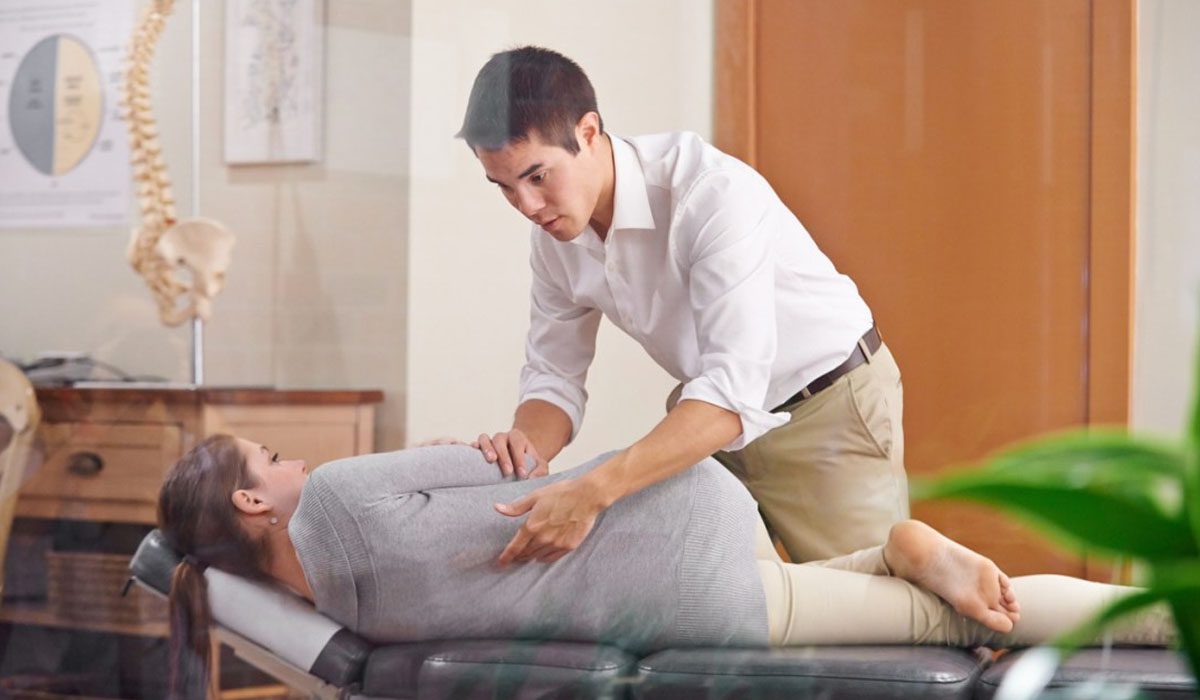How can a chiropractor help in Sciatica?
Sciatica is one of the common back ailments that trouble both young and old individuals in Dubai. Sciatica can bring both instant splashing pains to continuous discomfort. The shooting pain, numbness, tingling, and burning sensation that comes with sciatica become a constant frustration. Sciatica is observed to be more prevalent in people between the ages of 25 and 45. Many patients visiting our orthopedic clinic in Dubai often complain of mild discomfort to severe pain that inhibits mobility. It affects their day-to-day work, taking care of their home, or simply enjoying life.
Traditionally sciatica treatment involved extensive medication and invasive surgical procedures. However, now chiropractic treatment has proven to be highly effective in relieving the pain and completely curing the condition.
Our chiropractic expert says, “Trigger points are notorious and can pinch the sciatica nerve, which causes intense radiating pain. But trigger points respond well to our treatment and cause them to relax.”
What is sciatica?
Sciatica pain is caused by an inflammation, irritation, or compression of the sciatic nerve. The sciatic nerve is the largest and thickest nerve in the human body that stems from your lower back and branches down to the buttocks, hips, and legs. Whenever this nerve gets compressed because of some condition, it can radiate the pain the way down the line.
The term sciatica is used to describe any pain that originates due to compression of the sciatic nerve, irrespective of the reason. Sciatica pain is commonly caused by a hernia, slip disk, etc. Injury to the sciatic nerve directly is rare.
If you have sciatica, your potential symptoms are:
- Sharp and dull pain in your lower back.
- Burning sensation in buttocks and along one leg.
- Tingling sensation, alternating with numbness.
- The pain and burning sensation that radiates from the back to the toe.
According to our department of chiropractic medicine in Dubai, several factors can contribute to sciatica. They are:
- degenerative disc disease
- herniated disc
- spinal stenosis
- trauma injury to the lumbar spine or sciatica nerve
- spondylolisthesis
- piriformis syndrome
- tumors in the lumbar spine
- smoking
- regular wear and tear because of aging.
How chiropractor help in Sciatica treatment?
Manual therapies offered by our chiropractor provides relief without the unwanted side effects of medication or surgery. Chiropractic treatment has proven to be very effective in treating sciatica.
Chiropractors can help the body heal itself with the proper manual therapy. The best part about the treatment is that it’s non-invasive and does not require any medication. It helps the body heal itself, gently and naturally. Chiropractic treatment is the optimal solution for people who are tired of heavy medication and want to avoid surgery.
Our chiropractic practitioners use hands-on spinal manipulation and other alternative treatments to get you relief for agonizing sciatica pain.
Diagnosis of Sciatica is critical
Our certified chiropractor or physical therapist examines the patient and reviews the medical history to understand the causes of sciatica pain. They may even recommend the patient to undergo further tests to get a clear picture. During a physical exam, the doctor may check your muscle strength and flexes. For example, walking, rising from a squatting position, or rising while lying on your back.
The imaging results suggested by doctors are:
- X-ray
- MRI
- CT Scan
- Electromyography
The imaging results can help determine the line of treatment.
Non-invasive Chiropractic treatment
The treatment plan may vary from patient to patient, depending on the intensity of pain, age, and other health concerns. Our chiropractors also incorporate nutritional guidance and rehabilitation exercises. The goal here is relieving the pain, restoration of normal back posture and function, and prevention from further injuries.

What are chiropractic treatments we offer to our patients?
There are multiple treatment options that a chiropractor may use or recommend. They may be used alone or in combination with other manual and alternative therapies.
- Chiropractic massage therapy: It is one of the most intense and relaxing ways to relieve sciatica pain. The cautious and effective hand massages help release endorphins that are natural painkillers in our body. Chiropractors utilize their knowledge of your body’s musculoskeletal system and apply pressure on points that trigger the healing process.
- Heat and cold therapies: Manual therapists use alternating hot and cold therapies for instant relief from pain. Chiropractors use the same technique for sciatica pain. The heat helps loosen the tight muscles, and cold stops the blood flow and aids in inflammation. However, it depends on patients whether we go for hot/cold, hot, and cold treatment.
- TENS (transcutaneous electrical nerve stimulation): It’s a small muscle stimulant machine that passes a variable degree of electric current that aids in acute pain and muscle spasms.
- Ultrasound and other modalities: Gentle heat created by ultrasound waves go deep into muscles and increases blood circulation. Ultrasound also helps in reducing muscle spasms, cramping, stiffness, swelling caused because of sciatica.
- Chiropractic Adjustments: Spinal manipulation and adjustments are the core of chiropractic treatment. Chiropractors can apply spinal manipulation to bring the herniated disk back into its positions, thus taking off the pressure from the sciatic nerve. The adjustments further aid in the alignment of posture and gaining full movement of the spine. That’s not it; spinal manipulation helps reduce nerve irritability, inflammation, pain, muscle spasm, and all other symptoms associated with sciatica.
- Spinal decompression: We have observed that sometimes the discs in your spine go through natural thinning, causing pinched nerves and spine compression. The chiropractors use spinal decompression techniques to reduce the compression of the nerves.
- Exercises: Along with treatment, we also include a steady exercise regimen to be followed by our patients. The exercises help in loosening up the tight muscles and prevent further damage to the spine. The strengthening exercises gradually help in an overall improvement in health.
- Lifestyle changes: Getting rid of sciatica and preventing it may require some minor lifestyle adjustments on your part. Our experts may recommend you a new way to sit, stand, walk, and lift objects. The guidance can help you protect your sciatic nerve from further damage and offers a long-term solution.
Conclusion
Can a chiropractor help with sciatica? Yes, it is proven, and several of our happy patients can back that. Our chiropractor doctors have extensive experience in treating several patients. They are well-trained and equipped to get you relief from the notorious sciatica pain. With proper treatment and commitment from your side, you can get back to enjoying your life.
Reference:
https://www.webmd.com/back-pain/guide/sciatica-symptoms
https://www.healthline.com/health/back-pain/sciatic-stretches
https://medlineplus.gov/chiropractic.html
https://www.spine-health.com/treatment/chiropractic/what-a-chiropractor
https://www.webmd.com/pain-management/guide/chiropractic-pain-relief

















